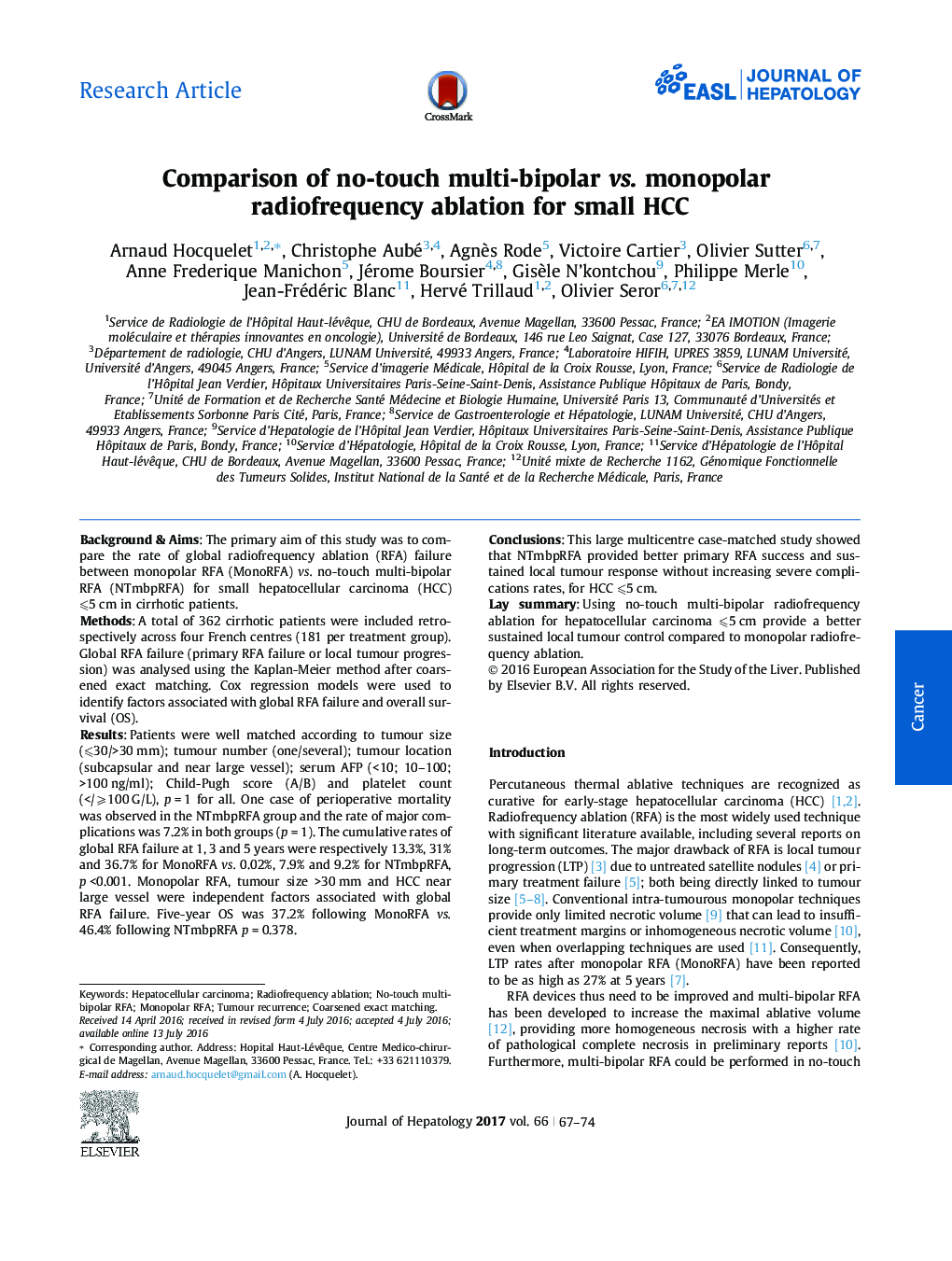| Article ID | Journal | Published Year | Pages | File Type |
|---|---|---|---|---|
| 5660439 | Journal of Hepatology | 2017 | 8 Pages |
Background & AimsThe primary aim of this study was to compare the rate of global radiofrequency ablation (RFA) failure between monopolar RFA (MonoRFA) vs. no-touch multi-bipolar RFA (NTmbpRFA) for small hepatocellular carcinoma (HCC) ⩽5 cm in cirrhotic patients.MethodsA total of 362 cirrhotic patients were included retrospectively across four French centres (181 per treatment group). Global RFA failure (primary RFA failure or local tumour progression) was analysed using the Kaplan-Meier method after coarsened exact matching. Cox regression models were used to identify factors associated with global RFA failure and overall survival (OS).ResultsPatients were well matched according to tumour size (⩽30/>30 mm); tumour number (one/several); tumour location (subcapsular and near large vessel); serum AFP (<10; 10-100; >100 ng/ml); Child-Pugh score (A/B) and platelet count (30 mm and HCC near large vessel were independent factors associated with global RFA failure. Five-year OS was 37.2% following MonoRFA vs. 46.4% following NTmbpRFA p = 0.378.ConclusionsThis large multicentre case-matched study showed that NTmbpRFA provided better primary RFA success and sustained local tumour response without increasing severe complications rates, for HCC ⩽5 cm.Lay summaryUsing no-touch multi-bipolar radiofrequency ablation for hepatocellular carcinoma ⩽5 cm provide a better sustained local tumour control compared to monopolar radiofrequency ablation.
Graphical abstractDownload high-res image (128KB)Download full-size image
